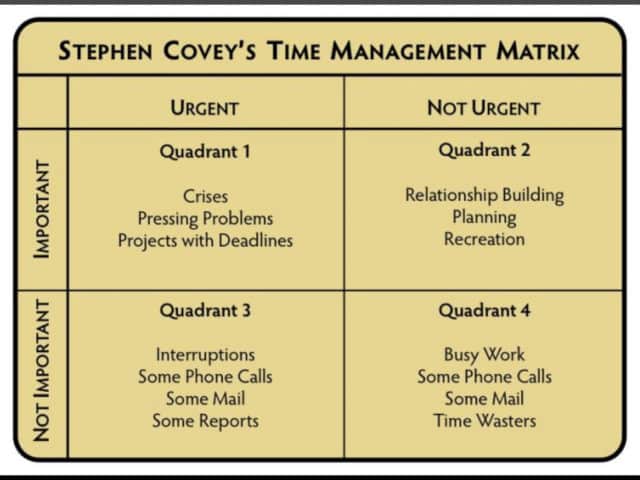I did a survey of training needs a few months ago among my stakeholders in a sales learning and development project, mostly Gen Ys, and unsurprisingly, in the top 3 was “managing time”.
Time is one of the most valuable resources that most people do not use to their full advantage. If time is used to its full capacity, we will experience its maximum benefits.
Time is a perishable resource – it’s impossible to keep it, save it, slow it down or use it later.
Regardless of one’s job role or position, time is a great equalizer. Everyone gets the same 24 hours in a day, whether one is the president of a country, CEO in a global company, an office worker, a business owner, a parent, or a student.
But we have different perspectives about time depending on which stage and roles we currently have in our lives. Such perspectives impact our approach to time management and prioritization.
As a Gen X professional, entrepreneur, mentor and coach to mostly Gen Y’s, I have learned 3 key lessons about maximizing time. I’ll back these up with the principles on time management by Jim Rohn and Stephen Covey.
1. “Learn how to separate the majors and the minors”, according to Jim Rohn. Stephen Covey called these “majors” the Q2 quadrant. Covey made a 2×2 time management matrix of Important versus Urgent activities. Covey said Q2 – the “important/not urgent” quadrant – should be our focus. These activities are focused on goals like improving quality of life and growing personal leadership. While we still have to do activities or tasks in the other quadrants, the amount of time we spend doing Q2 activities should take up majority of our time.
This implies being relentless and uncompromising in deciding how or where we spend our time, and with whom. One way to filter is to keep asking “Will doing this bring me closer to my goal?” Goals may include short-term or long-term professional goals. It is imperative then to continually review our goals and itemize the activities that need to be done. Best practice is to allot 30 minutes in a week to plan for the week, and 10 minutes or less in a day to review weekly progress.

2. “Don’t mistake movement for achievement. It’s easy to get faked out by being busy. The question is: Busy doing what?” said Jim Rohn. In Covey’s matrix, such “deceiving” or “time-wasting” activities fall under Q3 (not important/urgent) and Q4 (not important/not urgent) quadrants.
In an article I’ve written a few years ago, I told the story of the processionary caterpillar: The caterpillar has the instinct to follow in lock step the caterpillar in front of it. French naturalist Jean Henri Fabre in his processionary caterpillar experiment showed that this instinct actually led to the caterpillar’s death. “Each caterpillar followed the one ahead thinking that it was heading for food. Round and round for 7 days! After a week of mindless activity, the caterpillars started to drop dead because of exhaustion and starvation.”

I then wrote: People are different from caterpillars as we have the ability to change our direction in life. Unlike the caterpillars, we can choose to stop going “round and round for 7 days” and go for the “food”. Yet in many ways, people are similar to the processionary caterpillars. We often confuse moving with meaning, and activity with productivity and achievement. That is why we sometimes end up unhealthy, exhausted, unbalanced and starved in life, literally and figuratively.
3. “Sometimes you need to stay in touch but be out of reach”, according to Jim Rohn. I started to experience stress and burnout in my late 20s. It had long-term consequences on my health. One of the lessons I’ve learned is that downtime – whether it’s for physical rest, or mental and emotional re-charging – is essential!
When I was younger, I strove to be a visible and accessible manager-leader all the time. My strong passion and focus to achieve results meant my brain was working all the time. I was also a young wife and mother trying to balance everything. I’ve learned it the hard way that becoming a successful manager-leader doesn’t mean saying “yes” all the time. What’s important is to be there when it counts most.
I always tell the younger ones that if they are fortunate to be in a culture where work-life balance is valued, enjoy and maximize that. Rohn has put it well indeed: Learn how to say no. Don’t let your mouth overload your back.
All these are easier said than done, of course. Like any good habits such as having a balanced diet or exercising, Covey’s approach to time management will not work unless it’s practiced and becomes a daily habit. What will be important then will be putting the mindset into action, and not being discouraged by bumps along the way. Persevere until we can honestly and happily say to ourselves:
“My time and energy are invested on the activities and relationships I value most. The returns on these time investments – both short-term and long-term – are certainly worth it!”
Note: This article is also published in LinkedIn.
